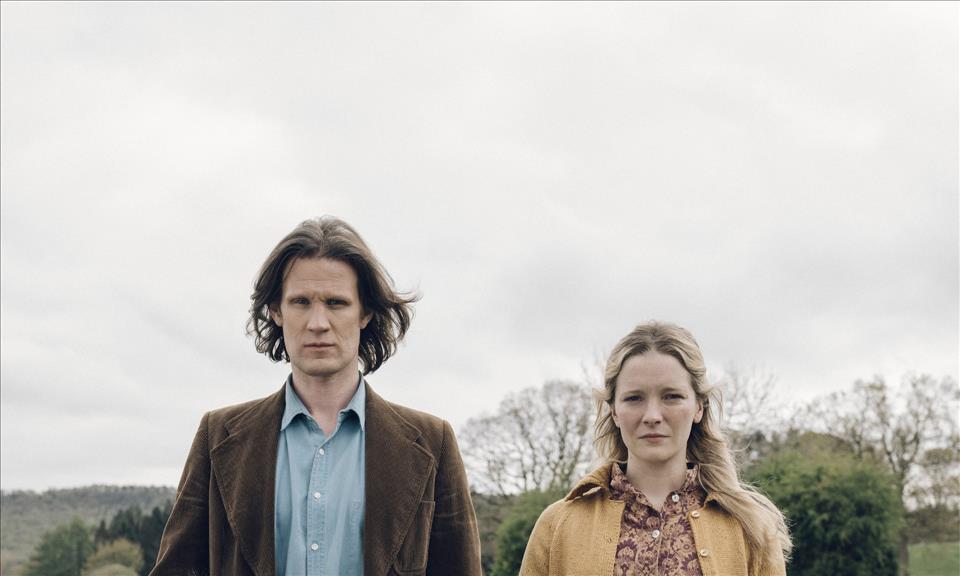
Starve Acre: A Stylish Folk Horror That's A Bit Too Respectable
Morfydd Clark and Matt Smith lead an excellent cast that also includes Robert Emms, Sean Gilder and Erin Richards. Clark and Smith play a dissatisfied couple mourning the death of their young son on the old family estate of Starve Acre, while plagued by increasingly creepy omens.
In typical folk horror style, the village locals don't seem too innocent either, as they draw Clark's grieving mother into a part-pagan, part-new-age form of therapy. History professor husband Matt Smith does his best to maintain that everything has a rational explanation, but starts to lose himself in his research into ancient folklore. Meanwhile, the legends surrounding a large gnarled tree on the estate soon begin to seem more real than imagined.
Anyone who has ever gone a bit too deep into their research will find elements to relate to in Smith's maverick, long-haired academic. Hinting at the horror archetype of the over-reaching intellectual, he challenges the fusty establishment of the tweedy university hierarchy, but his obsession with work leads to a neglect of his wife that may have viewers thinking of both The Shining and Don't Look Now.
Starve Acre is however most inspired by folk horror , a genre whose main interest lies in the frightening, fascinating, world of the pre-scientific, pre-industrial past. In folk horror, demonic forces lie buried within the pastoral landscape. The genre explores the potential of this buried past to resurface, destabilising the rational order of our complacent modernity, like in The Wicker Man.
History is never entirely laid to rest in horror, in which the violent irrationality of our ancestors haunts the living. Where folk horror is unique is that the threat does not come from the castles of the counts and barons of medieval Europe. Unlike the gothic, folk horror is firmly planted within the people of the national soil, their rituals and beliefs, the land that gives them sustenance, their closed communities and hostility to outsiders.
Folk horror is an international phenomenon, testified by the popularity of films from the Swedish-set Hollywood film Midsommar, the Icelandic Lamb (which Starve Acre bears similarities to), or the South Korean The Wailing. But in its British variants, folk horror presents a particularly striking alternative to our national stereotypes. The land in folk horror is neither green nor pleasant but brown and forbidding. Its people are neither orderly nor reserved but fanatical and cruel.
The original films of folk horror reimagined a pre-Christian pagan Britain, which seemed to resonant with the rise of the counter culture and alternative lifestyles in the late 1960s and 70s. Contemporary folk horror looks back both to that more distant past of ancient Britain and to the more recent period of cultural rebellion that saw the first phase of the genre.
The household radio in Starve Acre brings news of ongoing national strike action and of British troops in Northern Ireland. It is a strangely unfamiliar world of civil strife. But it is also a reminder of the moment when Britain lost its place in the world. This place has never really been regained, and the resulting loss of national self-confidence still shapes our politics today.
Starve Acre's vision is then as full of cultural meaning as it is of creepy atmospherics. The problem is that this vision never really opens out onto anything more exciting than the dullness of mud and rain. Its rural weirdness is already in danger of becoming a cliché and its final resolution is both overly neat and lacking a real sense of dynamic motivation.
Horror is best known as a disreputable genre that unleashes the uncontrollable forces of libidinal energy. Starve Acre is evidence of something else: of the elevation of horror towards a more respectable but therefore also less challenging cultural niche.
Starve Acre provides the pleasures of great acting, meticulous costuming and set design and literary adaptation (it is inspired by the 2019 novel of the same name by Andrew Hurley). In this, it seems to reconcile horror with the comfortable respectability of heritage cinema. The added edginess of its superstition and violence show that horror is now also an acceptable selling point to the contemporary tastes of the cultural mainstream.
Looking for something good? Cut through the noise with a carefully curated selection of the latest releases, live events and exhibitions, straight to your inbox every fortnight, on Fridays. Sign up here .

Legal Disclaimer:
MENAFN provides the
information “as is” without warranty of any kind. We do not accept
any responsibility or liability for the accuracy, content, images,
videos, licenses, completeness, legality, or reliability of the information
contained in this article. If you have any complaints or copyright
issues related to this article, kindly contact the provider above.


















Comments
No comment